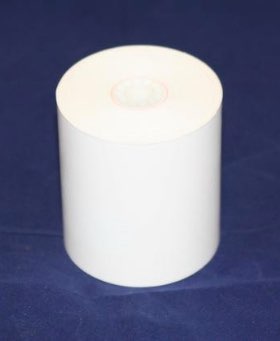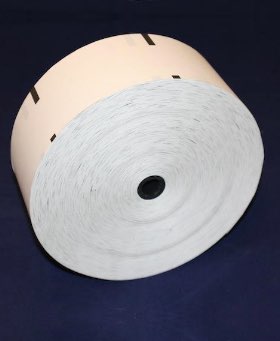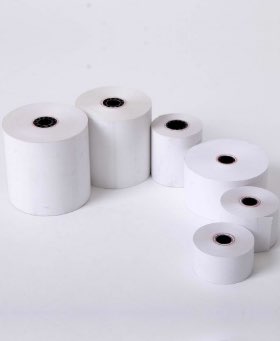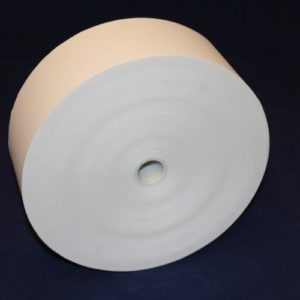
Introduction to POS Paper – A Complete Guide in 2023
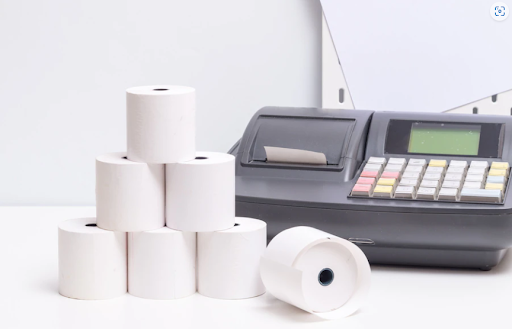
Image source: Premium Photo | Roll of cash register paper receipt (freepik.com)
POS (Point-of-Sale) papers, or thermal paper rolls, are designed to work with machines like cash registers, credit card terminals, and ATMs. The unique trait of this paper is its thermal sensitivity. It responds to heated print heads in thermal printers to produce clear, durable, and fast-drying images and texts. This eliminates the need for traditional ink cartridges, making thermal paper a cost-effective and efficient solution for point-of-sale transactions.
For any business, it is essential to ensure that their POS papers are of good quality and up-to-date. To help you better understand the industry’s current state in 2023, we have prepared this complete guide on POS paper. We will discuss topics such as types of thermal paper rolls, techniques for improving print quality, and important considerations when purchasing POS paper.
Introduction to POS Paper

Image source: Free Vector | Paper bill receipt from supermarket shop check (freepik.com)
Point-of-sale (POS) systems are integral to most retail and restaurant businesses worldwide. Central to these systems is a critical item – the thermal paper roll. This seemingly simple product is vital in transaction recording and receipt generation.
Thermal paper is a special type coated with a material formulated to change color when exposed to heat. It is used in thermal printers, particularly inexpensive or lightweight devices such as adding machines, cash registers, and credit card terminals. The surface of the thermal paper is saturated with a solid-state mixture of a dye and a suitable matrix.
The usefulness of thermal paper rolls extends beyond just receipt printing. They also allow businesses to track transactions in real-time, manage inventory, and perform sales analysis. In essence, thermal paper is more than just paper – it’s a business tool that aids in daily operations and long-term planning.
Types of POS Paper

When discussing the types of Point-of-Sale (POS) paper, we refer to the different kinds of paper utilised in POS systems. Let us understand a few of them closely:
Ordinary paper vs. Thermal paper
Thermal and ordinary papers are two common options for POS printing, but they each have advantages and disadvantages. Thermal paper rolls are coated with a chemical that reacts with heat generated by the printer, allowing it to create an image without requiring any ink or toner. On the other hand, ordinary paper rolls are regular sheets of paper that require ink to print. When deciding between ordinary and thermal paper, consider cost factors, output quality, and compatibility with your specific printer model. It’s also important to consider if a particular type of paper is compatible with your printer model.
POS Journal Paper Rolls
POS or thermal paper rolls are essential for point-of-sale (POS) systems and cash registers. They are widely used in the retail, hospitality, restaurant, and banking industries. Thermal paper rolls contain heat-sensitive ink that reacts with a thermal print head when exposed to high temperatures. This produces sharp and clear images that are easy to read. They also resist fading, allowing for long-term storage without significant deterioration in quality or clarity.
POS Credit Card Rolls
POS (Point-of-Sale) credit card rolls are essential to any retail or hospitality business. From restaurants to grocery stores, POS paper rolls help store owners streamline customer transactions and keep track of purchases. Traditional thermal paper rolls provide a durable solution for printing receipts quickly and easily. These high-quality papers typically offer enhanced print definition to ensure your customer has a legible and accurate receipt.
Understanding POS Paper Sizes and Measurements

Image source: Free Photo | Close up hands with receipts (freepik.com)
When it comes to thermal paper rolls used in point-of-sale (POS) systems, understanding the sizes and measurements is crucial to ensure seamless business operations. The size of a thermal paper roll is typically determined by three dimensions: width, diameter, and length.
The width of the paper roll should match the printer specification to allow for easy printing and clear receipts. The diameter refers to the size of the roll itself, which directly impacts the length of the paper that can be unwound from it. Finally, the length dictates how many transactions can be handled before a roll replacement is necessary. Misjudging these measurements could lead to incompatibility issues with your POS system or frequent roll replacements, interrupting your business workflow.
Benefits of Using High-Quality POS Paper
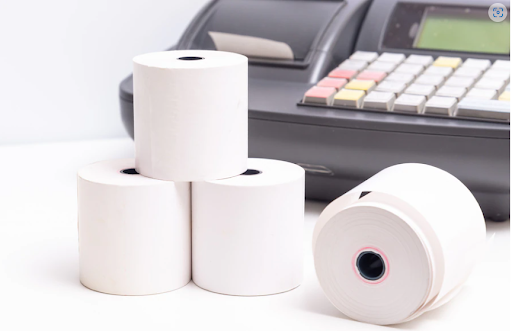
Image source: Premium Photo | Roll of cash register paper receipt (freepik.com)
We refer to various advantages when discussing the benefits of using high-quality point-of-sale (POS) paper, such as thermal paper rolls. Let us check out a few of them:
Enhanced Printer Performance
For retailers, switching to POS paper can greatly improve the performance of your printer. Thermal printing technology is more efficient than traditional dot matrix or inkjet technologies. POS paper requires less energy and generates fewer errors, often improving print quality. Additionally, the cost of thermal printers is much lower when compared to other types of printers because they don’t need to be replaced or serviced as often.
Lower Long-Term Costs
Using thermal paper rolls can help to lower your long-term costs associated with point-of-sale transactions. Thermal paper rolls have a much longer shelf life than traditional receipt paper, meaning you don’t need to replace it as often. Additionally, the printing process is designed to be efficient and cost-effective. This saves businesses money by reducing the paper they need to purchase.
Quality Customer Receipts
For any retail business, customer service and satisfaction are key to a good shopping experience. One way to ensure customers’ satisfactory experience is to provide quality receipts from their point-of-sale (POS) system. POS paper rolls enable businesses to print accurate, legible receipts for customers and can even be customised with logos or other graphics for a more professional look.
Environmental Impact of POS Paper

Point-of-sale (POS) systems often use thermal paper rolls, which have a significant environmental impact. The production process of thermal paper involves coating the paper with a chemical mixture, including Bisphenol A (BPA). This substance is harmful to human health and has detrimental effects on the environment. When thermal paper is discarded, these chemicals can seep into the environment, contaminating soil and water supplies. Additionally, thermal paper is non-recyclable. Digital alternatives to thermal paper rolls can mitigate these environmental concerns, underscoring the importance of sustainable practices in point-of-sale systems.
To decrease the environmental impact of thermal paper, businesses should consider using alternative solutions. For example, they may opt for digital receipts sent via email or text instead of printed versions. This eliminates the need for the chemical coating associated with thermal paper and physical waste from discarded paper rolls. Adopting these digital solutions will enable businesses to reduce environmental costs while still providing customers with desired services.
How to Select the Right POS Paper for Your Business
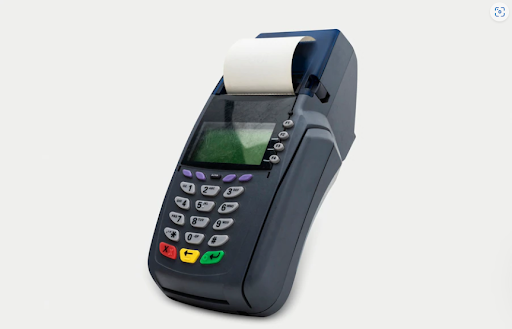
Image source: Free Photo | Point of sale machine design resource (freepik.com)
When choosing the right POS paper for your business, there are a few key factors to consider.
- Firstly, you need to understand the type of printer your point-of-sale system uses. Thermal printers require specific thermal paper rolls to print receipts. These printers use heat, not ink, to print on the paper, so using non-thermal paper would result in no printout.
- Secondly, consider the diameter and width of the paper roll that your printer can accommodate. Roll sizes can vary, and using the incorrect size can lead to jamming and other printer issues.
- Finally, consider the quality of the thermal paper. High-quality thermal paper provides clear, long-lasting prints, which are important for your business and customers.
By considering these aspects, you’ll ensure that you select the right POS paper that best suits your business needs.
Conclusion: POS Paper in the Future
As we look ahead to the future of point-of-sale (POS) transactions, the role of thermal paper rolls remains significant. Despite the digital revolution, thermal paper is integral to numerous businesses due to its cost-effectiveness, reliability, and ease of use. It’s anticipated that the demand for thermal paper will rise, especially in retail, banking, and hospitality industries.
Technological advancements may further enhance thermal paper quality and efficiency, solidifying its place in the POS landscape. In conclusion, while we may see a surge in digital transactions, thermal paper’s importance in POS systems will likely remain the same in the foreseeable future.
FAQs
What is paper POS?
Paper POS is an essential component of many point-of-sale (POS) systems. It refers to specially designed paper rolls to record sales and other information. This type of paper is made from a special coating that produces thermal images when exposed to heat. When integrated into a POS system, these paper rolls help businesses capture important transaction data for financial reasons.
What type of paper is used by POS machines?
POS (Point-of-Sale) machines are used in retail and hospitality settings to process sales transactions efficiently. To effectively print the receipts generated by POS devices, the thermal paper rolls they use need to maintain their quality over time. Thermal paper is a specialised type of backing paper with a coating that turns dark when exposed to heat from a thermal printer head. The heat causes a chemical reaction in the coating to create an image or text that customers can read.
What is POS paper, and what is it used for?
POS paper, also known as thermal paper, is a special type that uses heat to make an impression on the paper. This paper aims to provide a fast and efficient way to print receipts at point-of-sale (POS) locations in stores or businesses. This allows customers and merchants to quickly complete transactions without manual writing or other traditional printing methods.
Are there different types of POS paper available?
Yes, different types of POS (Point-of-Sale) paper are available, with thermal paper rolls being one of the most commonly used. Some of the most common examples are POS journal paper and POS credit card rolls.
Will the POS paperwork be with my specific POS machine model?
Most thermal paper rolls are designed to be universally compatible with a wide range of point-of-sale (POS) machine models. However, it’s essential to confirm the specifications required by your particular machine—particularly the width and diameter of the paper roll. It would be best to refer to your POS machine’s manual or manufacturer’s recommendations to purchase your system’s correct thermal paper rolls. It’s also crucial to note that using the appropriate thermal paper can enhance print quality and prolong the lifespan of your printer head.
Can POS paper be ordered in bulk?
Absolutely! Companies that use large amounts of thermal paper rolls can save more money by ordering in bulk. Not only do point-of-sale paper manufacturers offer better discounts for bulk orders, but they also provide a greater variety of options for payment, such as credit and debit cards or even PayPal. Bulk orders are an effective way to get the best.
How long does the print last on POS paper?
The longevity of a print on thermal paper depends on the type and quality of paper used. Generally, it can last up to several years if stored in optimal conditions (indoors, away from direct light sources). On the other hand, prints on regular POS paper may not survive more than a few months if exposed to direct sunlight or extremely humid environments.
How to make the PoS system work?
Ensuring that the Point-of-Sale (PoS) system works effectively ensures a smooth and efficient business transaction. Several components form the PoS system, such as thermal paper rolls, receipt printers, barcode scanners, card readers, and more. To ensure all these components work properly together and to keep your PoS up to date, it is important to understand how each component contributes to the system.

